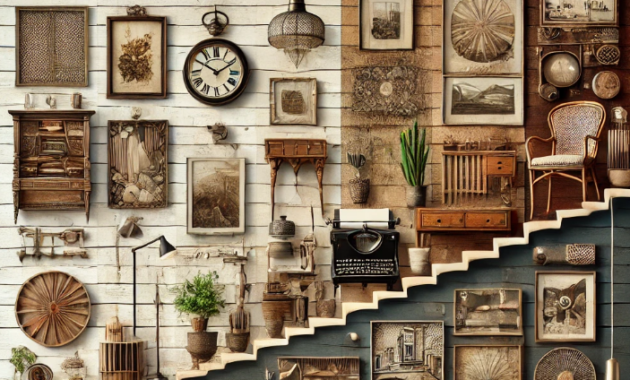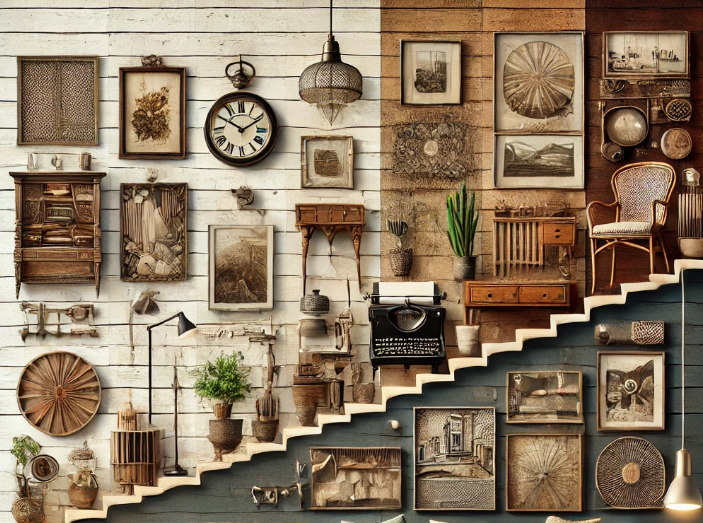
In the world of home decor, blending different styles is both an art and a science. The idea of mixing and matching various styles allows you to create a unique, personal space that reflects your individuality. But how do you know where to start? Where do the different styles intersect? In this ultimate guide, we’ll break down everything you need to know to expertly mix and match home decor styles. Ready to transform your home into a stunning reflection of your tastes? Let’s dive in!
1. Understanding the Core of Home Decor Styles
1.1 What are Home Decor Styles?
Home decor styles are specific design principles that revolve around certain themes, colors, materials, and furniture choices. These styles can range from minimalist and modern to vintage and eclectic. Each style comes with its own set of characteristics that define the overall look and feel of a space.
1.2 Popular Home Decor Styles to Know
Before diving into mixing and matching, let’s briefly review some of the most popular home decor styles:
- Modern: Clean lines, functional design, and a neutral color palette.
- Rustic: Natural materials like wood, stone, and metals, often with a cozy, earthy vibe.
- Industrial: Exposed brick, metal fixtures, and a raw, urban edge.
- Boho: A free-spirited, eclectic style with vibrant colors, textures, and global influences.
- Traditional: Classic furniture with rich colors, elegant patterns, and formal arrangements.
- Scandinavian: Simple, functional designs with a focus on light, airy spaces.
- Mid-Century Modern: Retro-inspired furniture with clean lines and bold colors.
2. The Art of Mixing and Matching
2.1 Start with a Neutral Base
The key to successfully mixing decor styles is to begin with a neutral base. Neutral tones like whites, grays, and beiges create a blank canvas, allowing the different styles to blend harmoniously. These tones can be used on the walls, flooring, or larger furniture pieces like sofas and coffee tables.
2.2 Focus on Balance
When blending different styles, balance is crucial. Aim for a mix of modern and traditional, rustic and industrial, or minimalist and boho, but keep in mind that no single style should dominate the space. Think of it like making a dish—there needs to be the right balance of flavors.
2.2.1 Layering Textures
Textural contrast is one of the most exciting ways to combine different decor styles. A modern couch might sit next to a rustic wooden table, while a boho rug adds warmth and texture to the floor. Playing with textures like velvet, leather, wood, and metal helps create depth and visual interest.
2.2.2 Color Harmony
While mixing colors can seem daunting, using a cohesive color palette will tie everything together. For example, if you’re blending industrial and Scandinavian styles, consider incorporating muted tones of gray and white with pops of bold color through accessories like pillows or artwork.
2.3 Combine Old and New
It’s easy to mix old-world charm with modern convenience. Vintage furniture can coexist beautifully with contemporary art, creating an interesting contrast between past and present. Just make sure to keep the proportion and scale consistent so that the room doesn’t feel too cluttered.
3. Incorporating Different Elements of Design
3.1 Furniture Choices
When combining styles, furniture is one of the most important elements. Consider mixing sleek, modern furniture with more traditional or vintage pieces. A modern sofa could be paired with a vintage wooden side table, and an industrial lamp can be placed next to a cozy armchair. The possibilities are endless!
3.2 Art and Accessories
Art is a great way to inject personality into any room, and accessories like throw pillows, vases, and lighting can help marry different styles. Mixing framed artwork in varying styles—like a modern abstract piece alongside a vintage painting—adds character while tying together contrasting themes.
3.2.1 Statement Pieces
Don’t shy away from statement pieces! A bold, oversized piece of art or a standout piece of furniture can serve as the focal point of a room. From there, you can build a harmonious mix around it.
3.3 Lighting Fixtures
Lighting plays an essential role in creating ambiance, and different styles of lighting can make or break a room’s design. Think of chandeliers with crystal detailing, paired with industrial-style Edison bulbs. This combination can create a balance of sophistication and rugged charm.
4. Common Mixing Mistakes to Avoid
4.1 Too Much Chaos
While mixing styles is fun, you don’t want your room to feel chaotic. Avoid throwing too many styles together without any common thread or theme. Simplicity is key—start with two or three styles and build from there.
4.2 Ignoring Scale and Proportion
One mistake that can disrupt the harmony of a room is failing to pay attention to the scale and proportion of the furniture and accessories. Large, bulky furniture can overwhelm smaller spaces, while tiny decor pieces can get lost in bigger rooms. Always consider the size of your space before making design decisions.
4.3 Lack of Cohesion
Even when mixing multiple styles, it’s important to have an underlying sense of cohesion. Whether it’s through a common color palette, material choice, or theme, every element should come together to create a seamless design.
5. Tips for Mixing Specific Home Decor Styles
5.1 Mixing Modern and Traditional
- Opt for sleek, modern furniture paired with traditional wooden accents.
- Use neutral tones to tie the two styles together, adding warmth through natural materials like wood.
5.2 Rustic Meets Industrial
- Use rustic wood furniture with industrial metal accents.
- Incorporate natural textures like leather and linen to soften the harshness of metal.
5.3 Boho and Scandinavian
- Layer textures such as woven baskets, soft throws, and natural wood.
- Stick to a light, neutral color palette with pops of color through accessories like pillows and rugs.
6. How to Create Your Own Signature Mix
6.1 Define Your Personal Style
Start by identifying the elements you love most from different styles. Do you love the warmth of rustic decor but want the cleanliness of modern design? Combine the two by integrating wood with minimalist lines. Your personal style will act as your guide as you mix different elements together.
6.2 Use Accessories to Experiment
Start small by introducing accessories that represent the different styles you want to mix. A vintage clock, a modern lamp, or a Scandinavian-inspired throw can serve as an introduction to a full mix.
6.3 Stay Flexible and Evolve
Mixing and matching home decor styles is a journey. Your tastes might evolve over time, and that’s okay! Be open to adding or removing pieces to find the perfect balance that works for you.
Conclusion
Mixing and matching home decor styles isn’t just about creating a beautiful space—it’s about making your home feel uniquely yours. By focusing on balance, cohesion, and personalization, you can effortlessly blend different styles to create a space that feels both fresh and timeless. Don’t be afraid to experiment and trust your instincts! In the world of home decor, there are no hard and fast rules—just endless possibilities.
FAQs
1. How do I start mixing home decor styles?
Start by selecting one or two styles you love and introduce them gradually. Begin with neutral tones and add pops of color, texture, or furniture pieces from the other styles.
2. Can I mix more than two styles?
Yes, you can mix more than two styles, but it’s essential to maintain balance and cohesion. Too many styles can overwhelm a space, so start small and build from there.
3. How do I combine modern and vintage decor?
You can mix modern and vintage decor by pairing sleek, modern furniture with vintage or antique accents. Focus on creating balance through a neutral color palette and complementary textures.
4. What’s the best way to balance rustic and industrial styles?
Blend rustic wooden furniture with industrial metal accents. Incorporate softer textures like leather and linen to add warmth to the industrial elements.
5. How can I make my mixed decor look intentional?
The key to making your mixed decor look intentional is cohesion. Whether through a shared color palette, consistent materials, or common themes, make sure the different styles tie together rather than compete.
Read More

Leave a Reply